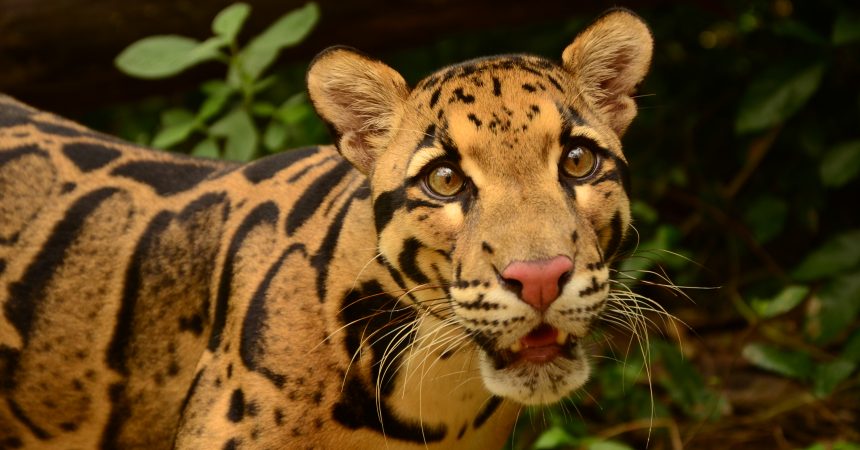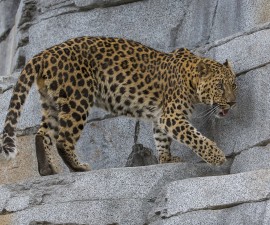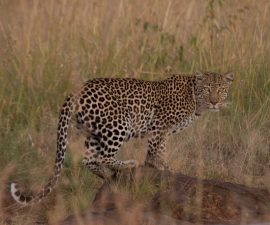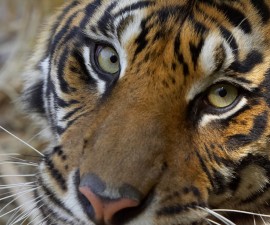The Thailand Clouded Leopard Consortium operates a breeding center for this unique, little-known cat in a national forest, at the Khao Kheow Open Zoo in Chonburi. It houses 40 clouded leopards, varying in ages from 17 years to 7 months. This breeding and research program has been running successfully since 2002, with a goal of learning more about this vulnerable species and creating a self-sustaining population in managed care.
As a senior trainer at the San Diego Zoo, I have had the opportunity to visit the Khao Kheow Open Zoo and breeding center three times in the past six years. Each time, I’ve learned something new about this ancient species of cat, which I have been able to share with my colleagues at the Animals in Action program at the San Diego Zoo.
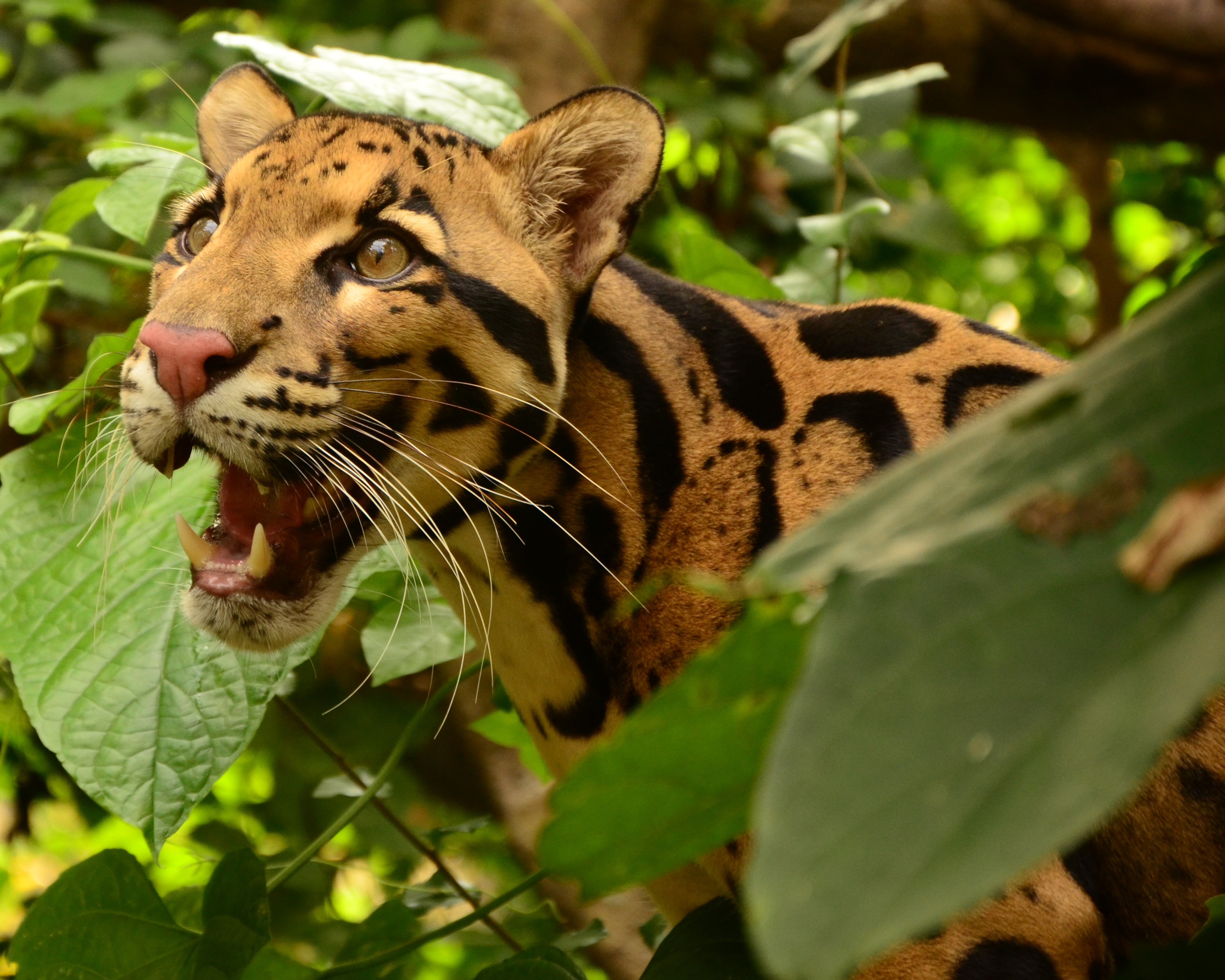
photo: Maureen O. Duryee
This past October, however, the San Diego Zoo supported another opportunity to share information we use at our facility with the Thai keepers. I was invited to lecture during a three-day workshop all about clouded leopards.
Ken Lang from the Smithsonian Institution started the seminar with a presentation on the history of the Thailand Clouded Leopard Consortium and finished with the details of breeding and hand rearing clouded leopards. My contribution consisted of teaching a training class with clouded leopards, using operant conditioning with an emphasis on positive reinforcement.

On the last day, we all made enrichment items appropriate for this cat species. The seminar concluded by introducing some of the enrichment items made by the Thais to a seven-month-old clouded leopard cub named Noi, to watch her reaction.
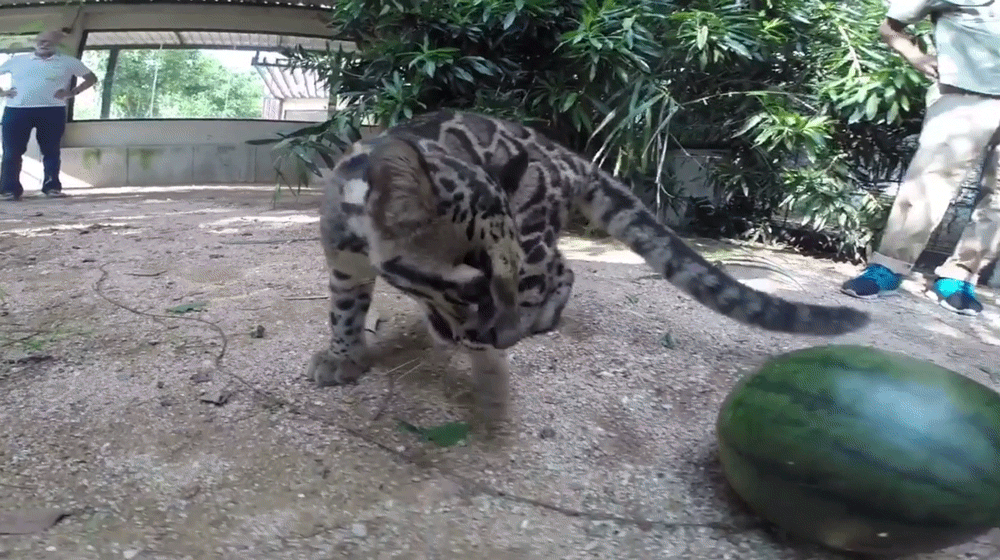
Historically, clouded leopards don’t adjust well to life in a habitat where there is a lot of public traffic. These cats require many hiding places, even when placed in managed care in quiet areas. Currently, the Thailand Clouded Leopard Consortium is doing research with Noi (which means “little”). The theory is, by raising her in a large living space with dense native vegetation and other areas to hide in, her chances of adjusting to busy zoo life are much better—especially while she is naturally curious and still very playful. She is visited several times a day by her keeper staff, and she seems to be adjusting to her surroundings much better than predicted.
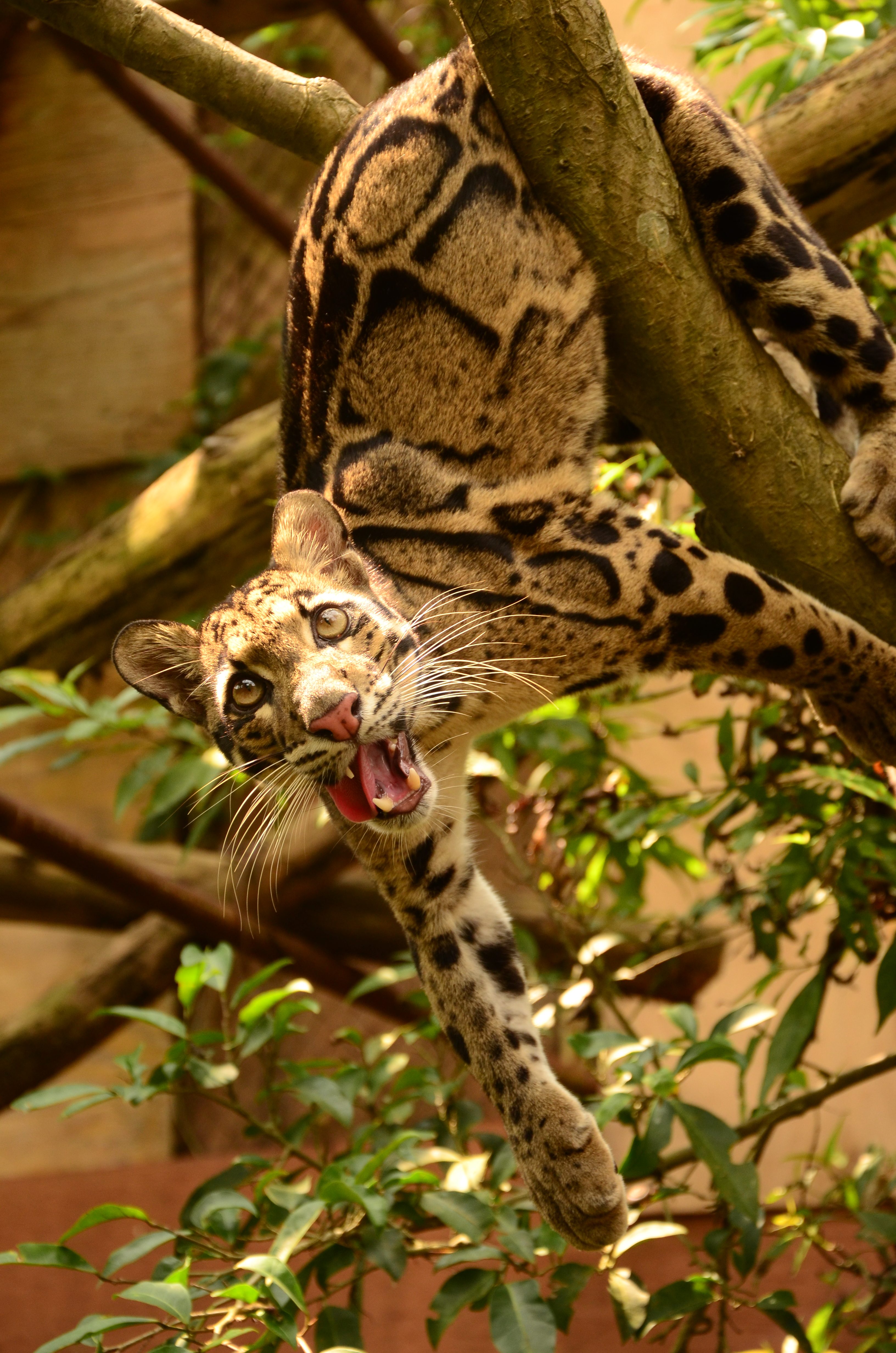
photo: Maureen O. Duryee
Breeding these threatened cats is the focal point of the program. Mai Me Chuu (which means “no name,”) was hand raised and paired with two other hand raised females, named Pi (which means “big sister”) and Talay (which means “beach”). This trio will spend the rest of their lives together, with the high hopes of producing more clouded leopards. No Name Senior was wild caught, and contributes valuable new genetics to this captive-managed population of a very rare, shy, and ancient cat species.

photo: Bill Wood
The consortium has experienced unprecedented success in artificial insemination (AI). In 2016, a female cub named I (from the abbreviation “AI”) was born. While there have been many AI attempts over the past 20 years, success has only come recently. I now lives next door to a potential mate, and they are showing amiable signs toward one another. Hopefully, the relationship will stay on this positive course and they, too, will contribute to increasing the currently declining population of clouded leopards.
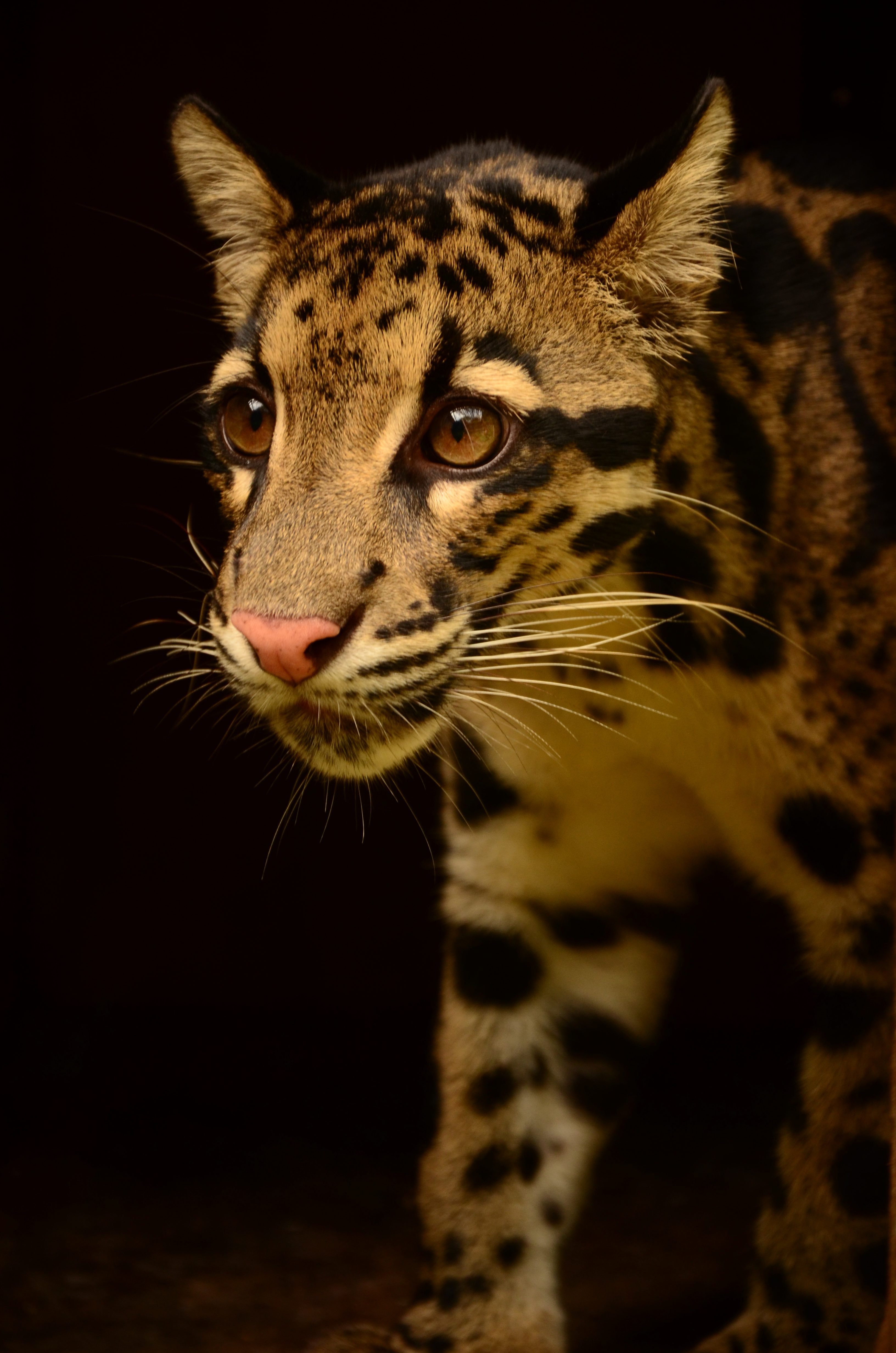
photo: Maureen O. Duryee
Breeding this species of cat presents natural challenges, due to the complexity of their reproductive process. However, the research underway at the Thailand Clouded Leopard Consortium breeding facility is providing insights that may eventually help boost their numbers—both in managed care and wild habitats.
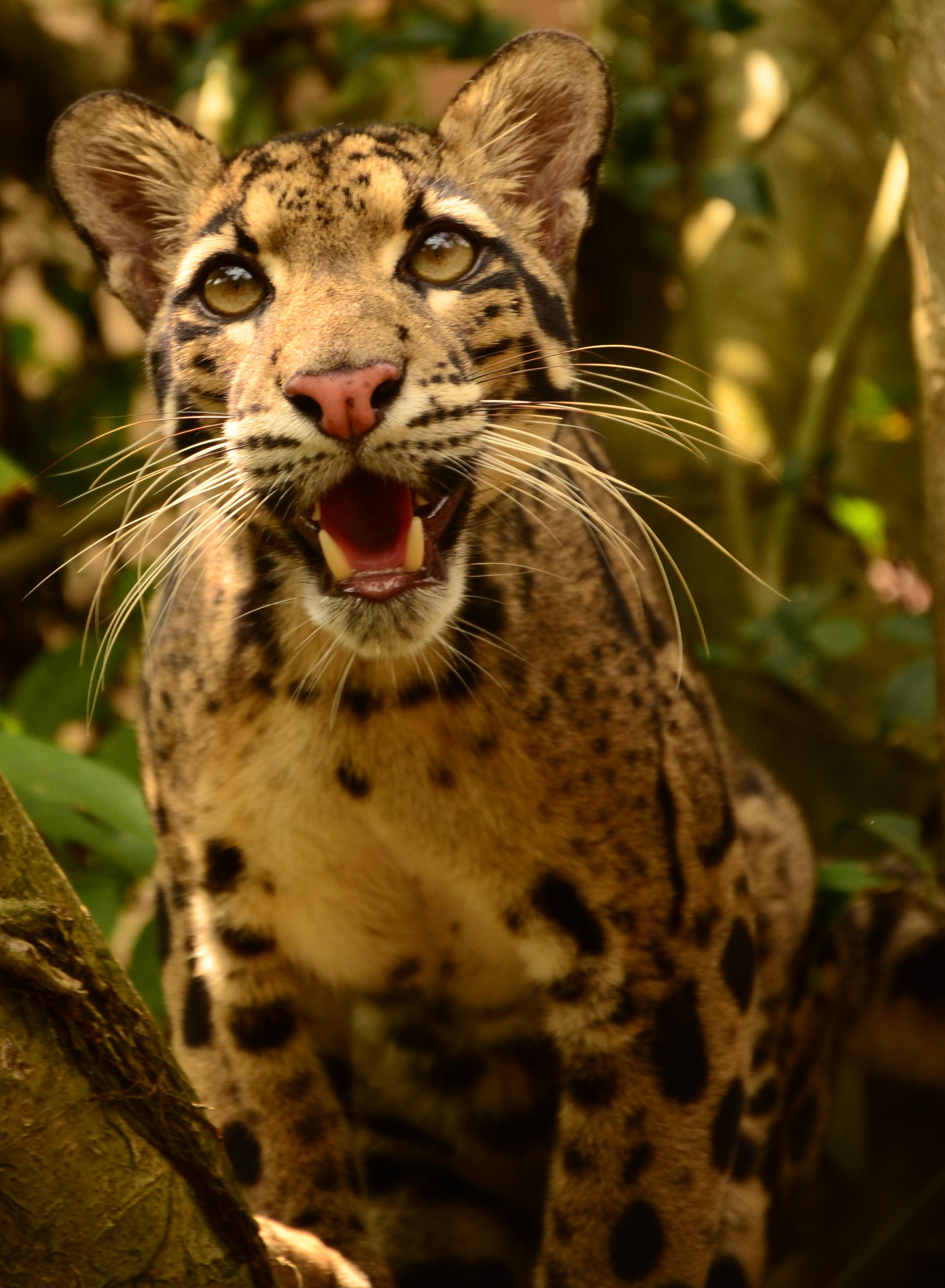
photo: Maureen O. Duryee
Maureen O. Duryee is a senior animal trainer at the San Diego Zoo. Read her previous post, May 9 is World Binturong Day.
(Header photo and video by Maureen O. Duryee)

